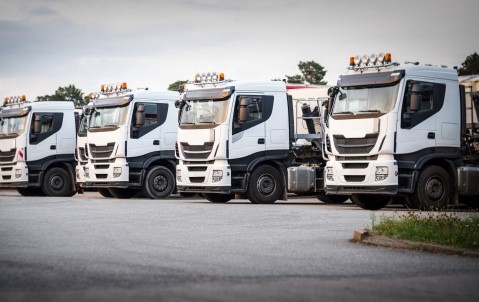
Keep on truckin'
Texas-based insurtech challenges London's traditional underwriting model.
The London Market may have had its critics when it comes to the introduction of technology, but Scout Insurance Group has found a warm reception in Lime Street for its tech-based approach to US truck insurance. “Many domestic markets in the US are not as receptive to the technology we use and the idea of a live data feed or comparative rating when it comes to underwriting. Lloyd’s has been very keen and shown that the market wants to change and embrace technology,” says Scott Stineman, President of Scout Insurance Group.
While many insurtechs have arrived from nowhere, surfing in on a digital wave, Scout has an insurance heritage that stretches back decades. “My family got into trucking insurance in the mid-1950s. I grew up in insurance,” says Stineman. “My brother started writing software for the trucking business back in the 1990s and he bought dotcom sites like physdam.com, cargoliability.com and other insurance related sites. Our focus on what technology can do for transportation insurance grew from there”
While many insurtechs have arrived from nowhere, surfing in on a digital wave, Scout has an insurance heritage that stretches back decades.
Today, Scout is a technology-driven MGA with 40 plus employees, focusing on a range of covers for trucks and cargo in the US. The business currently works with 15 insurers and syndicates, and handles upwards of 60,000 risk submissions a year.
Matching risks with underwriters
One of Scout’s core underwriting products is its Motor Carrier Snapshot (MCSS), a database which collects risk data nationwide and enables insurance agents to quickly and effectively pre-qualify risks to determine eligibility. “Once a risk comes in from an agent, the system scores it, rates it, decides whether it wants it, whether it should be declined, or whether it needs to be referred to one of our underwriters,” says Stineman. “Usually there are four or more rates provided per risk and the agent can compare the coverage and review it with the insured to find the best coverage that fits their risk.”
Usually there are four or more rates provided per risk and the agent can compare the coverage and review it with the insured to find the best coverage that fits their risk.
Scout uses data to constantly refine its insurers' books of business, so each one can be tailor made to a carrier’s individual needs. “The insurers set their goals and we model the book based on those to achieve the results the insurer is looking for. We constantly monitor the live data and make real time changes to make sure those goals are met,” says Stineman.
Dashboard insight
It's a model that appeals to Hiscox, one of its biggest market outside the US. “We have a book with Scout that focuses on small truck fleets of between one to 20 vehicles, offering core products of auto-physical damage and cargo liability,” says Ishaan Rahman, a Trainee Underwriter for Hiscox London Market’s Alternative Risk team. “The dashboard is hugely insightful with every piece of information you could conceivably want about a risk and how the book is performing. They will slice and dice every rating factor to see where the trends are coming from.”
The live data feed for insurers means that insurers can check at any time to see how their book is performing, allowing Scout to continually make changes.
The live data feed for insurers means that insurers can check at any time to see how their book is performing, allowing Scout to continually make changes. “That’s the beauty of the modelling. If we make a change, we know quickly if it’s working or not. We want to empower our brokers and markets and say we are all in this together. Everyone has the same access to the same data on a real time basis.” says Charlie Streetman, Executive Vice-President at Scout Insurance Group.
No surprises
Accessing live data also means there are none of the surprises that sometimes accompany the month long wait for an MGA’s bordereau. “It is a unique approach in the London Market. Scout picks out any underperforming areas and address them there and then, letting go of a lot of poorly performing business. It is proactive underwriting rather than reactive,” says Russell Summers from broker Ambris, who worked with Scout to get Hiscox on board. Insurers can now be far more nuanced in their risk selection, adds Streetman. “Our approach means insurers don’t need to get rid of an entire state or region from their book – throwing the baby out with the bath water – because we allow them to drill down to a granular level and be far more selective in the risks they get rid of and the ones they retain.”
As our data set grows our ability to predict the likelihood that a risk will be involved in a loss grows with it.
Tapping the benefits of machine learning
Looking to the future, Scout is intending to bring in artificial intelligence (AI) to help with performance and risk selection. “We have 10 years’ worth of data – it’s enough to start running AI. As our data set grows our ability to predict the likelihood that a risk will be involved in a loss grows with it. It’s data driven predictive analytics that will set the course for the future” Stineman says.

